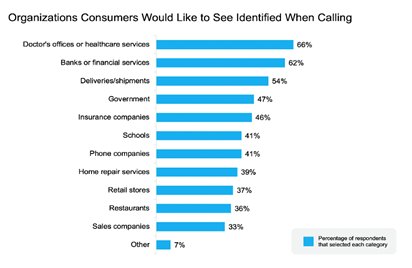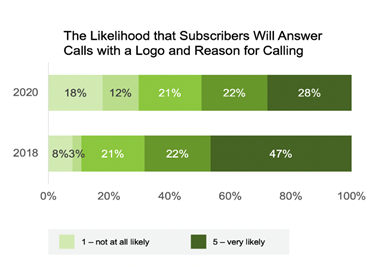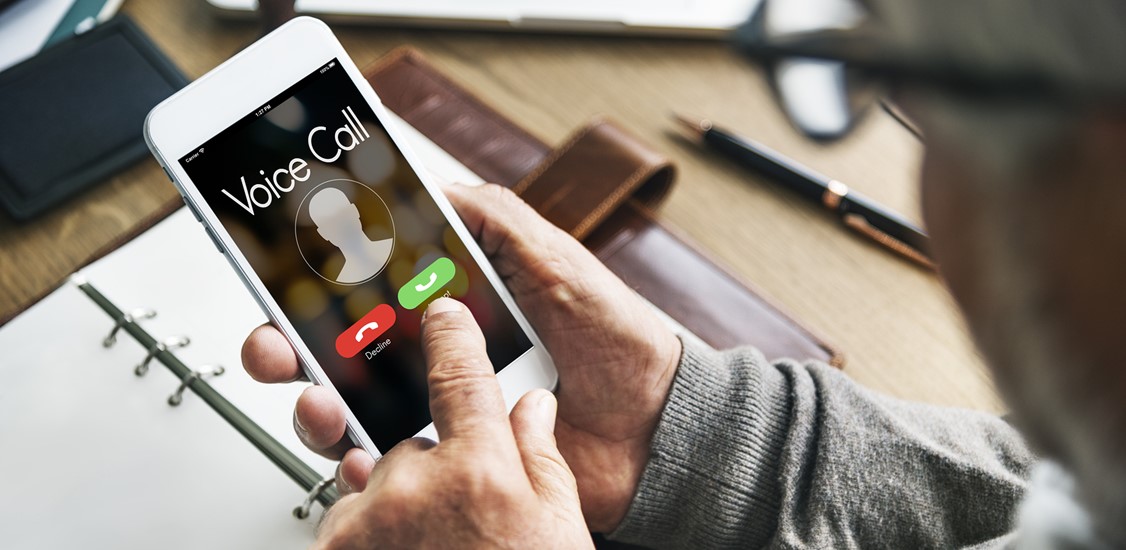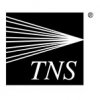Robocalls placed by bad actors threaten to undermine the relationship that legitimate businesses have with consumers. Americans received more than 77 billion unwanted robocalls over the past year and, on average, receive between nine to ten unknown calls per week.
Consumers are now conditioned to not answer the phone unless they know who is calling, as evidenced by an 11% answer rate for unmarked phone numbers, according to the 2021 Robocall Investigation Report, Sixth Edition, by Transaction Network Services. As a result, the FCC is squarely focused on ensuring carriers are tackling this growing issue by implementing a call authentication infrastructure at no charge to consumers.

Communication technologies must continue to evolve in order to improve the subscriber experience when it comes to engaging with brands. Accelerating the development and deployment of branded calling - paired with analytics solutions - is a good place to start in order to restore trust in voice calling and undo the damage that robocalls have had on consumers, businesses and carriers.
Branded calling provides helpful identification on an incoming call screen that allows a company or organization - such as a pharmacy, school or municipality - to provide important information to the call recipient. This can include information on the screen like the organization name, logo and reason for calling, thus enriching the user experience while ensuring recipients don’t miss important calls.
The risk of missing an important phone call has heightened during the COVID-19 pandemic. One of the biggest challenges contact tracers face is an unexpected one: robocalls. Scammers are spoofing legitimate government and health agency phone numbers to trick people into surrendering money or personal information, and the public has been conditioned over the past several years to stop answering calls from unknown numbers, creating mistrust and leading them to not answer legitimate contact tracking efforts. Because of this, wireless carriers, government health agencies and industry leaders are working to confirm call identification information for consumers and improve answer rates for legitimate contact tracing calls.
In our biannual Robocall Investigation Report, we were not surprised to find that receiving relevant context for incoming calls is valuable: more than half (52%) of consumers say that seeing brand information affects their trust in the call.
That being said, the incoming caller still has a large impact on consumers’ willingness to answer calls. For example, 34% of respondents indicated that they would answer a call from their doctor, whereas only 14% of people are willing to answer if it appears to be a business solicitation.
All in all, consumers are most interested in taking calls from businesses that offer personal services being identified, such as doctor’s offices or bank/financial services.
While only 11% of respondents will answer an unknown number, that number rises to 30% if the call has a name attached, 33% if it has a logo, and 50% if it includes the name, logo and reason for the call.

While the likelihood of someone answering unknown calls without being given the organization name, logo and/or intent is low, consumers have become less trustful of incoming calls in general. When compared to 2018, the likelihood of consumers answering phone calls with a logo and intent has decreased by 19%. Additionally, the level of trust in enterprise callers being truthful about who they are is also significantly lower, with a 28% decrease.
There is a key reason for this phenomenon: consumers have been hammered with a variety of increasingly convincing robocalls in the past few years, including many claiming to be well-known companies like Apple and Amazon. Most, if not all, of Apple’s store phone numbers have been spoofed at some point. The calls sound legitimate, provide a secondary “customer service” number to call and immediately begin harassing the victim.
Displaying call information, though a step in the right direction, is still not enough. While an incoming call might display a logo, it doesn’t eliminate the possibility that the call could be spoofed by a bad actor. To overcome this issue, carriers must turn to advanced data analytics to parse the massive volumes of daily call events and identify patterns in emerging robocall tactics. This allows carriers to verify phone numbers and accompanying call information, thus further improving trust with the consumer.
At a time when the importance of being able to reach Americans by phone has been clearly illustrated through contact tracing efforts, policy, telecom and industry leaders are taking steps to help boost trust in voice calling again. Branding incoming calls has been shown to increase that trust when paired with a reliable analytics component that helps to verify that calls are not being spoofed.






















